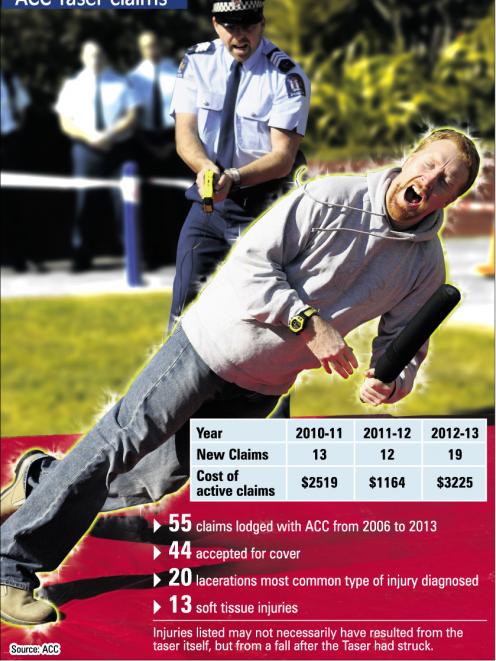
Figures released to the Otago Daily Times under the Official Information Act reveal 55 claims to ACC concerning Taser injuries have been lodged since 2010.
Of those, 44 were for males and 11 for females, and 44 claims were accepted for cover.
This week police confirmed Tasers had been discharged 277 times and presented 1817 times between the national introduction of the device on March 22, 2010 and December 31, 2012.
''While we do not like to see anyone injured as the result of police interaction, the very low numbers of injuries highlights that the Taser is a very successful tool in helping to de-escalate difficult and violent situations that might have otherwise ended in more serious injury or worse,'' national manager operations Superintendent Barry Taylor said.
The highest number of claims in a year (19) was in 2012-13. Taser injuries include lacerations - most likely cuts or punctures (20 claims), soft-tissue injury (13), foreign body in orifice/eye (5) and burns (4).
Concussions/brain injuries, dental injuries and fracture/dislocation injuries were also recorded but their numbers were ''not specified to mitigate the risk of those claims being identified'', a spokeswoman said.
Injuries may not have resulted from the Taser itself but from a fall after being tasered.
None of the accepted claims were regarded as serious injuries or resulted in weekly compensation being paid for loss of income.
The cost of active claims was $6908, with $3225 recorded in 2012-13.
Police data, excluding minor probe injuries, showed injuries caused as a result of discharges included six minor (i.e., no/self/staff treatment), 13 moderate (i.e., medical treatment but no hospitalisation) and two serious injuries (i.e., hospital admission). The hospital admissions resulted from falls after a discharge, Supt Taylor said.
Police policy required that people who had been tasered were seen by a GP.
Any issues identified with Taser operation had been addressed.
For example, early in the Taser trial, there was an issue with some staff inadvertently obscuring the Taser camera lens during deployment, and this had been rectified through additional training.
''In addition to the requirement for staff to report Taser presentations and discharges, incidents are subject to oversight and review to ensure compliance with policy.''





